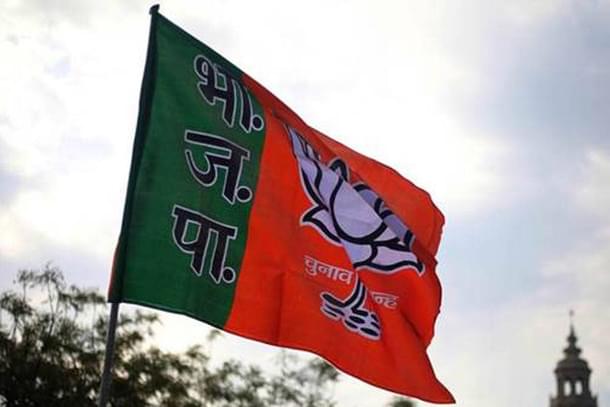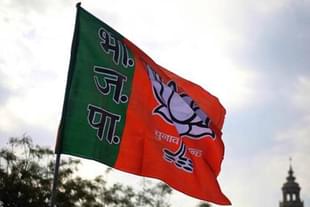Politics
Monthly Handouts For Women In Maharashtra To Guaranteed Crop Procurement In Haryana — Has BJP Finally Embraced ‘Revadi’ Culture?
Krishna Dange
Aug 08, 2024, 02:37 PM | Updated Aug 12, 2024, 12:02 PM IST
Save & read from anywhere!
Bookmark stories for easy access on any device or the Swarajya app.


On 16 July 2022 while inaugurating the Bundelkhand Expressway in Uttar Pradesh, Prime Minister Narendra Modi who is known to have a penchant for devising catchy acronyms and using words hitherto not part of the political lexicon, said in his speech:
“There are some governments which are indulging in ‘Revadi culture’ to secure votes, while the double engine government is working towards creating new expressways and rail routes.”
To the lay listener, Revadi until then evoked imagery of a sweet made using sesame seeds and jaggery, usually distributed among devotees at religious events. However, the usage of this word in his speech here had a different connotation.
PM Modi then used the word as an alternative to freebies or sops, referring to the state-sponsored schemes and handouts promised by political parties with left-of-the-centre inclinations ahead of polls.
During the expressway's inauguration, the Bharatiya Janata Party (BJP) had returned to power in the state for a second term. However, its seat count in the state assembly had dropped by 57, totalling 255 seats, with many lost to the Samajwadi Party (SP).
In Punjab, which also held elections alongside Uttar Pradesh, the Arvind Kejriwal-led Aam Aadmi Party (AAP) gained power for the first time, despite having minimal influence outside Delhi. The AAP not only displaced the ruling Congress but also pushed aside the Shiromani Akali Dal, which was the second-largest party in the assembly after Congress.
The promise of several welfare schemes or poll sops for which state governments would bear the cost is said to have benefitted both AAP and SP. This included unconditional farm loan waivers, free power supply to farm pumps, and free bus rides for women, among others.
Visibly worried with the trend of freebies eclipsing his party’s development theme, PM Modi further warned that the ‘Revadi culture’ was ‘dangerous for the country’ and appealed to the masses, especially the youth not to fall prey to the poll sops.
In 2024, Congress, the second-largest opposition party to the BJP in the Lok Sabha, sought to attract voters before the general elections by offering a series of incentives, which Rahul Gandhi called ‘Khatakhat’. These included promises of an ‘unconditional’ direct cash transfer of Rs 1 lakh to every poor household and internships for unemployed graduates.
Congress’ promises failed to catapult it onto the ruling benches. However, it did take up its seat share in the Lok Sabha from 52 in 2019 to 99 at present.
In terms of the larger coalition maths, while the Congress-led INDI-alliance won 237 seats, the BJP-led National Democratic Alliance (NDA) lost 60 seats, reducing its total from 353 in 2019 to 293 at present.
State-wise, some of the biggest losses for the NDA were from its citadel – Uttar Pradesh and other states like Maharashtra and Haryana where it has been on a strong footing since 2014. The saffron party’s losses here are even more highlighted as the party was also in power in the state governments of these three states.
Taking lessons from its contracting seat share in the state assemblies and the Lok Sabha, and with an eye on the state assembly polls in Maharashtra and Haryana expected in October 2024, BJP has finally swallowed the ‘Revadi’ and launched its own Khata-Khat Express.
Mega Freebie Bonanza In Maharashtra
Maharashtra – which comprises 48 Lok Sabha seats, second highest state-wise and having a state assembly which has 288 seats – has been one state where the saffron party has found it difficult to entrench itself.
This is despite the western Indian state being the birthplace of Hindutva, the ideology championed by VD Savarkar and the Rashtriya Swayamsevak Sangh, the BJP's parent organization.
From 1980 when the party was established, BJP has been able to complete a full term in power only twice – from 1995 to 1999 as a second fiddle to the undivided Shiv Sena of the past, its coalition partner and from 2014 to 2019 in the steering role aided by a bickering undivided Sena as its ally.
The party was able to move on to the ruling benches again in 2022 after a large faction of the Shiv Sena split and joined NDA again after a brief sojourn in the Congress-led coalition.
To overcome its instability in the state and prevent the Lok Sabha poll fiasco which saw BJP’s own seat tally drop from 23 in 2019 to just 9 at present, the Mahayuti — coalition comprising its partners, the Eknath Shinde led Shiv Sena and the Ajit Pawar led Nationalist Congress Party — has announced a slew of poll sops.
Some of the major ones are:
1. Mukhyamantri Ladki Bahin Yojana – Under this scheme based on Madhya Pradesh’s Ladli Behna Yojana, all women between the age of 21-65 in the state with an annual income of less than Rs 2.5 lakh will receive monetary assistance of Rs 1,500 per month.
2. Mukhyamantri Yuva Karya Prashikshan Yojana – Students pursuing education in Maharashtra will be eligible to apply for state government-facilitated internships lasting six months. After selection, each student will be paid a stipend ranging from Rs 6,000 to Rs 10,000 per month by the state government during the internship.
3. Mukhyamantri Teerth Darshan Yojana – Senior citizens over the age of 60 with an annual income of less than Rs 2.5 lakh will be eligible to claim Rs 30,000 to cover travel, accommodation, and food expenses for religious pilgrimage.
4. Mukhyamantri Annapoorna Yojana – Under this scheme, three gas cylinder refills will be provided free of cost to Mukhyamantri Ladki Bahin Scheme beneficiaries as well as those households who benefit from the Union Government’s Pradhan Mantri Ujjwala Scheme.
5. Mukhyamantri Baliraja Free Electricity Scheme – With an eye on the rural vote, the state government has earmarked Rs 7,775 crore for a free electricity scheme for farmers. A total number of 44 lakh farmers using 7500 horsepower pumps are expected to benefit from this scheme.
6. Subsidy For Solar Pumps, Aid For Soyabean And Cotton Farmers – The state government will provide monetary aid for cotton and soybean of Rs 1,000 for up to 2 hectares and Rs 5,000 for more than 2 hectares in the ongoing Kharif season. It also plans to enhance the existing subsidies on the purchase of solar pumps for farmers.
These schemes are apart from the state government’s ongoing Anandacha Shidha scheme entailing special food kits to BPL families during festivals, half-priced bus tickets for women on all state-run buses and Mahatma Phule Jan Arogya Yojana among others.
The newly announced schemes, along with those in the pipeline such as the distribution of utensils worth Rs 10,000 to each of the 12-lakh female domestic servants in the state, are expected to come at a cost of more than Rs 1.5 lakh crore. The state government currently has a debt of more than Rs 7 lakh crore, the second highest in the country.
Farm Focus In Haryana
Politics in Haryana and Maharashtra is dominated by feudal families and landed gentries more than any other state in India. This goes against BJP’s core beliefs of empowering the backward castes and giving opportunities to those with no family legacy, making it difficult for the party to get a firm footing in the state.
In the northern state of Haryana, which, along with Punjab contributes the lion’s share to the overall paddy production in India, the BJP gained power for the first time in 2014 and retained it again in the 2019 assembly elections.
In the Lok Sabha 2024 polls, the party’s Lok Sabha seat share dropped from 10 in 2019 to 5 at present. In a bid to restructure the party in the state, the party replaced Manohar Lal Khattar with Nayab Singh Saini as its Chief Minister.
However, this has done little to reduce anti-incumbency or ease internal party conflicts, as both Khattar and Saini are not Jats — the dominant caste which calls the shots in Haryana politics.
Since Haryana contributed a large number of protestors along with those from Punjab against the proposed farm laws, the party has latched on to the agricultural segment in the state.
Here are some of the promises that the state government has made:
1. Procurement Of All Crops Enlisted Under MSP – The state government has announced that it will buy all 23 crops at the Minimum Support Price (MSP) designated by the Centre while launching the party's election campaign. This is against the procurement of only 14 of the 23 crops by the state government in the past.
2. Waiver For Canal Water Usage Charges – Haryana CM Saini also declared that Rs 133 crore will be waived in outstanding canal water irrigation charges. He also said that the water cess will be discontinued, giving a relief of around Rs 54 crore annually to the farmers.
3. Compensation For Crop Damages – The state government will disburse the pending compensation of Rs 137 crore to farmers who experienced crop damage due to natural calamities in the districts of Rohtak, Nuh, Fatehabad, and Sirsa before 2023.
These announcements are in addition to the state government’s ongoing welfare schemes, such as the Happy Card Scheme, which provides free travel on state-run buses for families with an annual income of less than Rs 1 lakh, up to 1000 kilometers.
Staff Writer at Swarajya





